info@dentallifeline.com
Blog
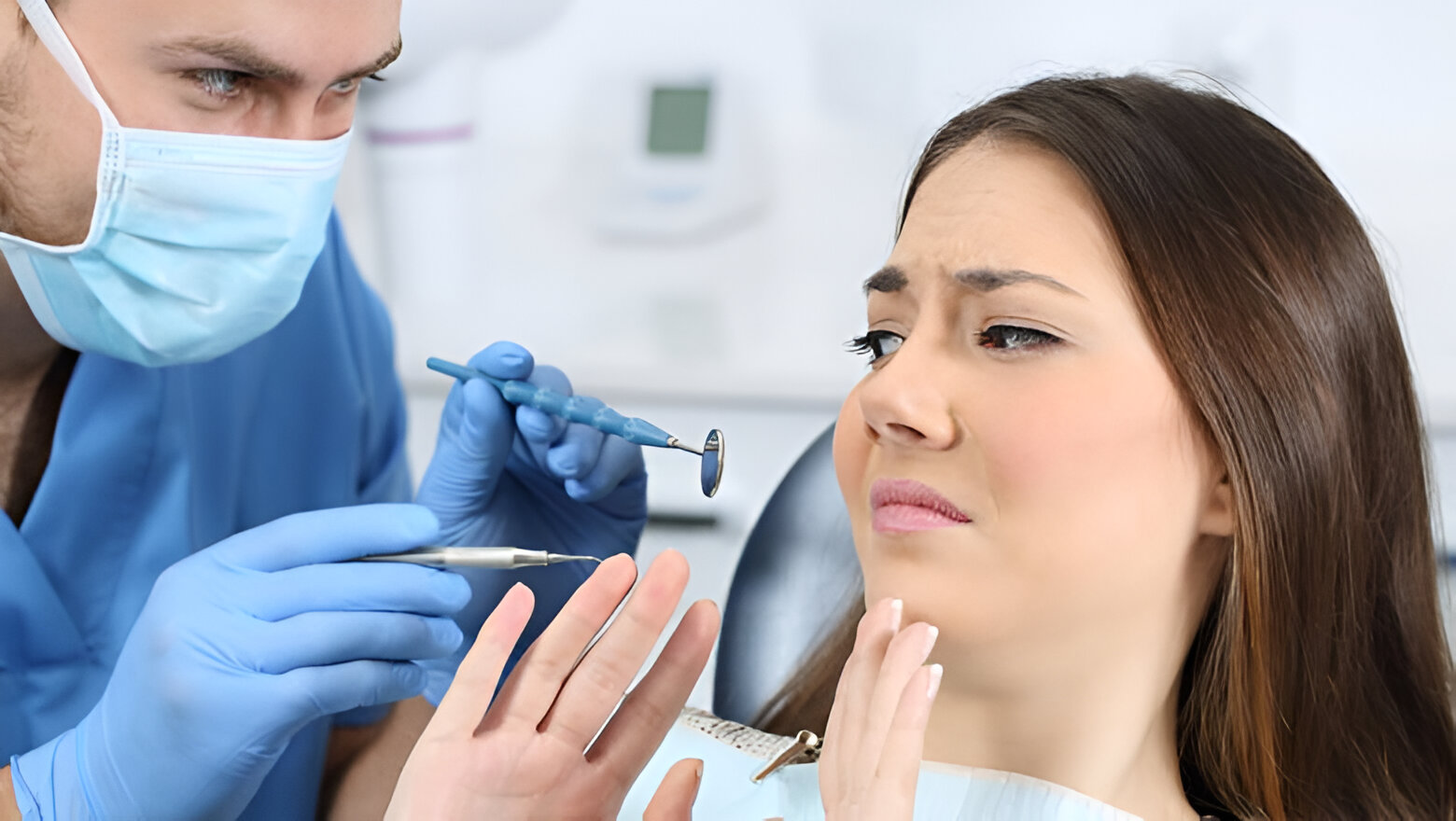 15 May 2024
15 May 2024
TIPS FOR OVERCOMING DENTAL PHOBIA
Dental phobia is a reality for many individuals who suffer from feelings of anxiety at the thought of going to the dentist. While some men and women outright avoid the dentist due to their fears, studies show that a larger percentage of the population only schedules a dental appointment when absolutely necessary.
Regular check-ups are essential to maintaining strong, healthy teeth/gums, as well as preventing potentially serious health conditions linked to poor dental care, such as diabetes, heart disease, and stroke.

Our dental practice offers several solutions to help alleviate mild to severe dental anxiety; however, natural solutions may also be useful in reducing nervousness before and during your treatment, including:
- Bringing someone you trust to your appointment. Studies show the presence and comfort of a friend/loved one can make anxious patients feel more at ease during their appointment.
- Listening to relaxing music through your headphones during treatment. When played at a quiet volume, your favourite music can provide a distraction from your environment and help you relax.
- Talking to your dentist about your fears. By telling your dentist about your dental phobia, he or she can assist you in coping with treatment by gently guiding you through each stage of treatment, distracting you when necessary, being aware of your pain threshold, and more.
- Practice breathing exercises. Deep breathing exercises and relaxation techniques can help take your mind off treatment and allow you to focus on your breath rather than your fears.
- Inquiring about potential options to make you feel more relaxed. Backed by the ADA, Sedation Dentistry techniques can be tailored to your specific anxiety levels to help you enjoy a more pleasant treatment experience. Many options available allow you to remain conscious, yet deeply relaxed, during your visit.
In any case, the key to overcoming dental anxiety is to find a gentle and caring Dentist who can make you feel at ease during your appointment.
At DENTAL LIFELINE the most trusted clinic of Chandigarh for Dental Care, our compassionate dental team is committed to making your visit as relaxing, pleasant, and comfortable as possible.
Please don’t hesitate to call our office for best treatments in implants and root canals , to learn more about how we can help you get the dental care you seek while accommodating your unique individual needs.
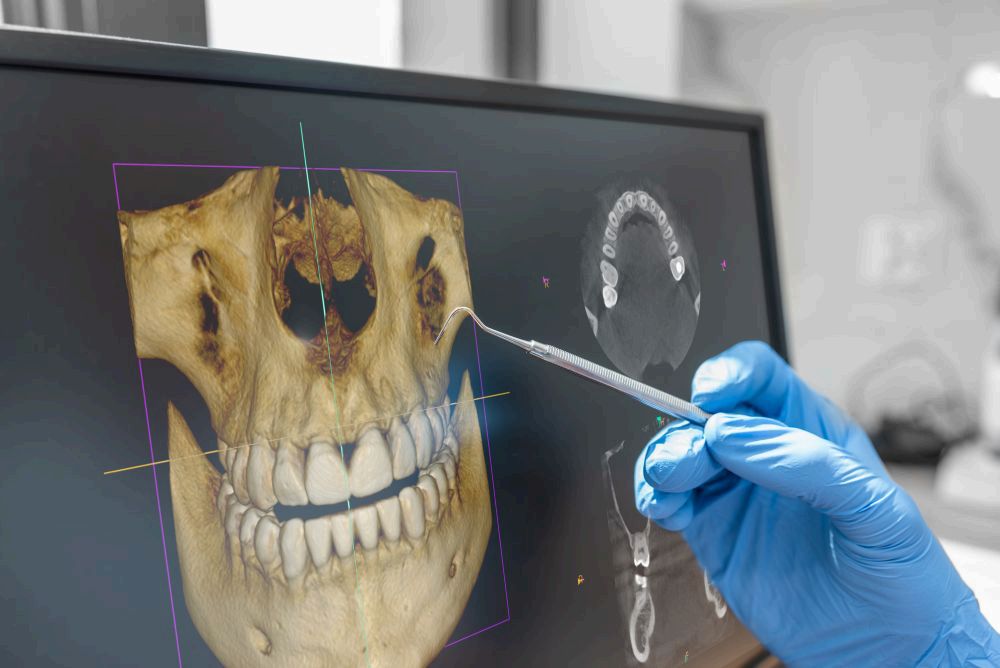 11 Apr 2024
11 Apr 2024
What Every Patient NEEDS to Know About Dental X-Rays and Safety
Dental X-rays play a key role in oral health. They enable a dentist to review their patients’ oral health development and identify underlying problems related to the teeth, jaw, and soft tissues of the mouth.
Plus, X-rays help a dentist provide an accurate diagnosis and determine the best course of action to treat oral health issues.
But one thing every patient wants to know is:
Are dental X-rays safe?
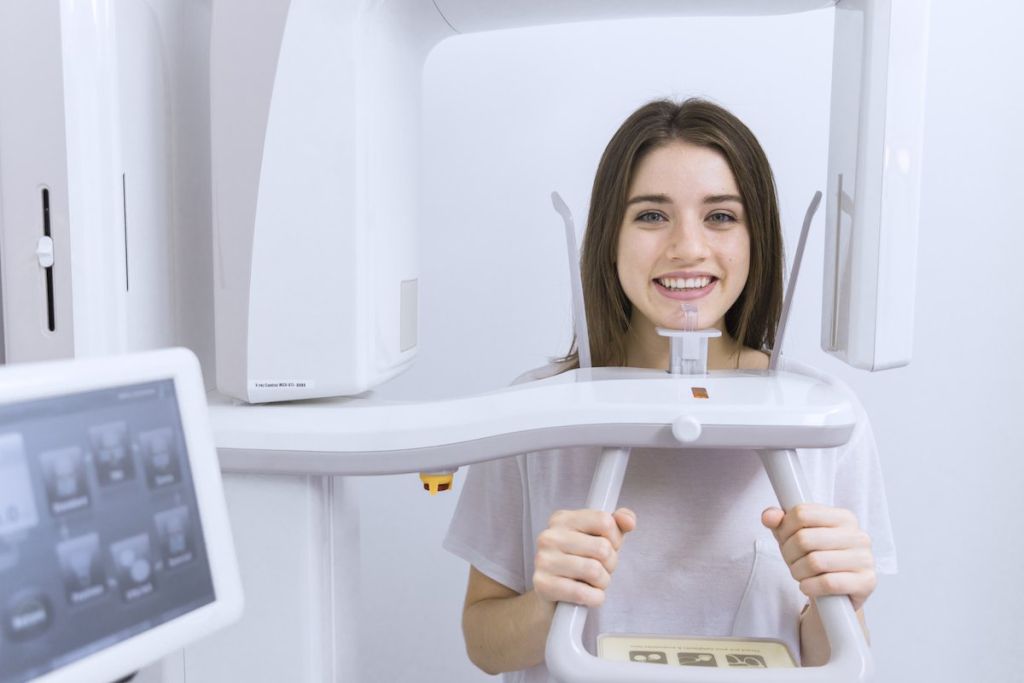
Which Conditions Require Dental X-Rays?
There are several other reasons why a dentist may recommend dental X-rays, too. These reasons include:
• Monitor Oral Health Injury Healing and Recovery: If a child or adult suffers a mouth injury, a dentist may use an X-ray to track the patient’s healing progress and ensure that he or she can make a full recovery.
• Identify Oral Infections: Dental cavities, gingivitis, and other oral infections are problematic. Thanks to an X-ray, a dentist is better equipped than ever before to identify an oral infection before it gets out of hand.
• Determine If an Orthodontic Treatment Is Necessary: A dentist sometimes uses an X-ray to determine whether to recommend an orthodontic treatment.
Not all dental X-rays are created equal. In fact, a dentist may recommend one or more of the following types of dental x-rays:
- Bitewing
- Periapical
- Panoramic
- Occlusal
- Orthodontic
- Cone Beam Computerised Tomography (CBCT): Provide a 3D view of the patient’s mouth to help a dentist assess the development and space of their teeth.
Are Dental X-Rays Safe?
![]()
X-rays emit some radiation, but according to the American Dental Association (ADA), radiation exposure due to dental X- rays is minimal in comparison to both human-made and natural radiation sources.
Meanwhile, the ADA notes that dental radiographs account for roughly 2.5% of the effective radiation dose received from all medical radiographs and fluoroscopies (medical X-ray imaging procedures).
There are almost no risks from dental x-rays as long as dentists and patients follow the prescribed procedure.
The radiation levels you get from x-rays can cause no harm to your body.
Before you go under x-rays, our dental professionals will ensure that you are fully aware of all safety precautions. Before you go into the x-ray room, there are several questions you’ll need to answer. These questions include your pregnancy status and any pre-existing conditions that might make you more sensitive to radiation.
Can X-Rays Become Unsafe?
Radiation used in dental x-rays is very low and even less than it was a decade ago. One x-ray emits about 0.1mrem radiation. The average person receives more radiation from the environment in one year.
Drinking water emits about 5mrem annually.
Smoking cigarettes can provide you with more than 1300mrem over the course of a few months.
Contrary to this, x-ray radiation can be almost undetectable, so it is still important to ensure you are staying below recommended radiation levels.
![]()
How Do Dental Lifeline Handle Patient X-Rays?
At Dental Lifeline, Chandigarh we strive to provide safe, effective dental care for both children and adults. As part of our commitment to our patients and their health and well-being, we use state of the art X-ray technologies to help protect kids and adults from radiation exposure.
Our zero- and no-radiation cavity detection technologies allow us to use autofluorescence to identify cavities and tissue damage in the mouth. They help us accurately detect dental issues and provide an instant diagnosis of cavities and cracks in the teeth. Then, if we identify an oral health problem, we can treat only the diseased area accordingly.
![]()
The DENTAL LIFELINE provides digital, panoramic X-rays.
• We use Radiovisiography [ RVG ] as latest imaging technique in dentistry with the minimal radiation exposure of the patient.
• We provide a high-voltage power supply in a high-frequency DC x-ray unit should be used in Portable X-ray equipment to limit the radiation to the patient.
They provide 2D images of a patient’s mouth and jaw, as well as help us diagnose a patient’s oral health problems and map out a personalised treatment plan. That way, we can best help a patient achieve a healthy, beautiful smile.
The Bottom Line on Dental X-Ray Safety
At Dental Lifeline, the health and well-being of our patients guide our day-to-day efforts. We understand the radiation exposure dangers associated with X-rays, and to combat these risks, we deploy the latest X-ray technologies.
Our team takes the maximum precautions to keep patients safe during X-ray procedures and performs X-rays on an as-needed basis.
We take into consideration X-ray frequency, family dental history, and other crucial factors to ensure each patient is comfortable with their treatment and we help our patients weigh the pros and cons of X-ray procedures so they can make an informed decision based on their personal needs.
The Dental Lifeline is all about safety – and giving each patient an extraordinary experience every time they visit our office. Dental X-rays may seem complicated at first, but The DENTAL LIFELINE is happy to help patients understand X-rays and X- ray safety.
If you need more information related to the question, “are dental X-rays safe,” don’t hesitate to contact us. To find out more about our dental X-rays or to schedule a consultation with one of our dentists, please contact us today at 0172-5087111 or text on 8283050396 . You can also schedule your exam, including x-rays online. If you’re ready to take positive steps toward ensuring your child has optimal dental health, you can schedule your appointment today!
 02 Apr 2024
02 Apr 2024
Myths and Facts on Clear Aligners
When preparing for clear aligners treatment, it’s important to distinguish between a myth and a fact. Let’s bust some common myths related to aligners.
Myth 1: Clear Aligner Treatments Are Expensive.
• Fact: Orthodontic treatment with clear aligners is cost- effective and not ‘expensive’.
• The treatment costs depend on the type of teeth problem that you are looking to correct.
• In truth, clear aligner treatment should be considered an investment for long-term oral health.
• Most doctors offer flexible or monthly payment options, making aligner treatments more affordable.
• Moreover, if patients look at the bigger picture, the benefits of clear aligners are much more significant when taking the cost into account.
Myth 2: Clear Aligners Are Hard To Maintain.
• Fact: Unlike braces, clear aligners do not have an elaborate cleaning routine. Patients should rinse their trays every-time they remove and wear them. You can also clean your trays daily with mild soap and water.
Myth 3: There Are Food And Drink Restrictions With Clear Aligner Treatment.
• Fact: NO, you do not have to give up your favourite snacks and drinks. This is one of the most important things to know before getting clear aligners.
• You are free to eat anything you want, whenever you want, with aligners as long as you take them out before eating or drinking.
• If you don’t, you run the risk of damaging the aligners from the chewing pressure as well as staining from the foods.
Myth 4: Transparent Trays Cannot Move Teeth As Effectively As Orthodontic Braces.
• Fact: Clear aligners are capable of working as effectively as metal braces.
• With the advent of modern plastics, clear aligners make tooth movement possible.
• Aligners can even treat complex cases like deep bits, open bites, severe crowding, cross-bite, etc., using auxiliary attachments like elastics, temporary anchorage devices, and attachments.

FAQ’S
1. What Do I Need To Know Before Getting Clear Aligners?
Firstly, consult with a certified aligner expert or orthodontist to find out if you are a suitable candidate. The treatment process is typically faster with aligners and can achieve the same results as fixed braces. Your doctor will brief you on everything you need to know before starting the treatment.
2. What Don’t They Tell You About Clear Aligners?
Your doctor will inform you of everything you need to know before getting clear aligners. There is a misconception that clear aligners are expensive and not as effective as braces. In reality, aligner treatments are much more affordable with flexible payment plans. Additionally, they can treat even advanced cases like open bite, cross-bite, deep bite, etc, using auxiliaries and the right clinical knowledge.
3. What Should I Expect In The First Week Of Wearing Clear Aligners?
Just like any orthodontic treatment, you might feel slightly uncomfortable the first few days of wearing aligners. But if you wear your trays for a minimum of 22 hours daily, this discomfort will go away in a few days as your mouth adjusts to the aligners.
4. Do Aligners Hurt?
Clear aligners don’t hurt, but the tooth movement that happens can cause mild discomfort in the first few days.
With clear aligner, your orthodontic treatment journey will be as smooth and clear as your aligners. What are you waiting for?
Get in touch with our team and we will connect you with a certified aligner expert in your locality!
BEST SMILE DESIGN SPECIALIST IN CHANDIGARH
DENTAL LIFELINE
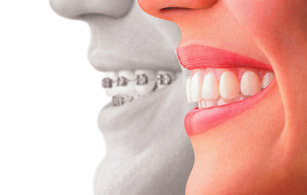
 08 Feb 2024
08 Feb 2024
New Approach for Smile Designing: Clear Aligners
• A smile can brighten your face like no other accessory.
• We at DENTAL LIFELINE the best dental clinic in Chandigarh offer you clear aligners.Traditionally, orthodontists and dentists used train-track braces to correct misaligned teeth. The procedure involved the use of metal brackets connected by wires.
What are clear aligners?
– True to their name clear aligners are practically invisible. You can have them on, and not be awkward about it, because no one will notice them. Moreover, clear aligners are not one size fit all – they are customised to suit individuals.
– Clear aligners are a snug fit; they slip over teeth, are transparent and go unnoticed. They are the best way to straighten teeth and do so gently, over a period of time.
– An important point to note here is that aligners are best suited for all ages albeit teens or adults. That is because they are custom-built to fit snuggly.
– A young child will not benefit from this procedure of straightening teeth, as their mouth and jawline are not fully developed.
– It is best to allow the ortho specialist to decide whether aligners are suited for you or not.
– It is also in your interest to go to an experienced professional, We at DENTAL LIFELINE offer excellent service and utmost patient care.

How Aligners Work?
– After doing the initial assessment of the teeth, the Orthodontist will first take extremely accurate digital impressions of your teeth and jaw using the most recent 3D intraoral scanner technology.
– Alginate or PVS impressions, which are frequently less precise and more unpleasant than digital impressions, are not necessary when you undergo 3D scanning.
– Through a compact, portable, radiation-free device, the 3D scanner digitally records the structure of your teeth and gums.
– We can build a model of your teeth from the digital impressions the 3D scanner collects to outline your whole treatment strategy.
– The 3D scanner generates results digitally, so they are immediate.
– Clear aligners are then made as per the treatment aim. The set of clear aligners will exert pressure on the teeth to move them in a specific direction until it reaches the desired position.
– The person has to visit the Orthodontist to change the aligners set as per the appointment given. Generally, the next appointment is given after an interval of around 5 to 7 weeks.
– Clear aligners can treat different problems like crooked teeth, overbite, underbite, the gap between teeth, and any such teeth misalignment problem.
– Clear aligners can give better teeth alignment that can improve the smile nicely.

3D Scanning Benefits
• Radiation Free
• Accurate dental models
• Quicker treatment method

3D INTRAORAL SCANNER TECHNOLOGY
To learn more about the aligner systems we use at DENTAL LIFELINE or to find out how aligners can help you get a more beautiful smile, book an appointment online today.
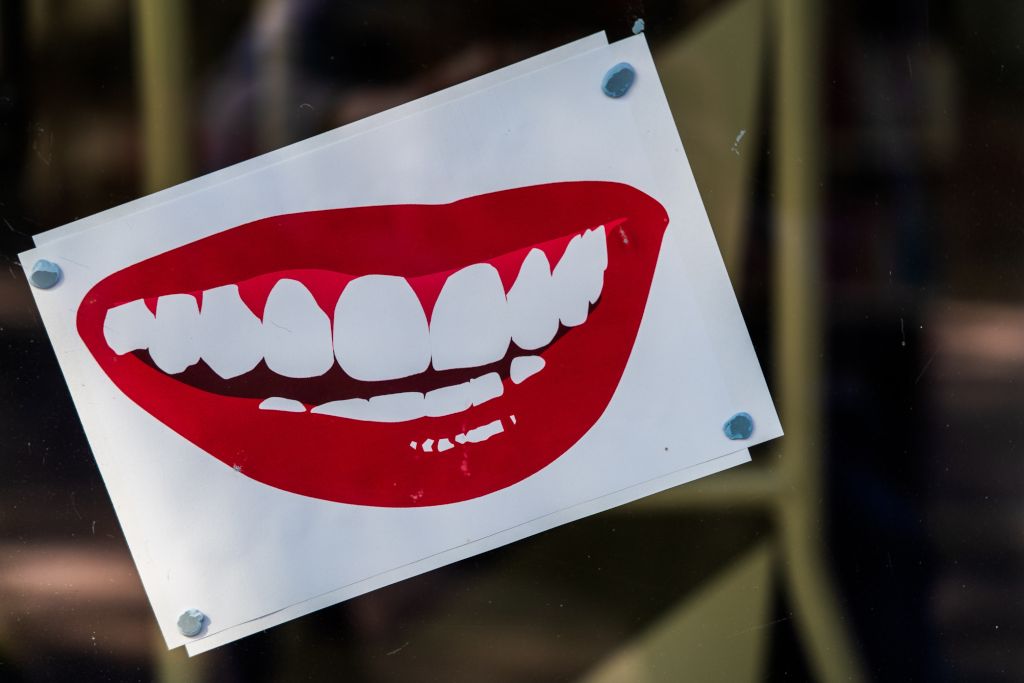 12 Jan 2024
12 Jan 2024
LASER TEETH WHITENING
Laser teeth whitening is a technique for brightening an individual’s teeth. It differs from other teeth whitening techniques and it uses a bleaching gel and a laser which is a high-intensity light beam.
A tooth whitening gel is applied to an individual’s teeth during the procedure. The bleaching gel is then heated by a laser that is directed at the teeth. This activates the whitening properties of the paste and changes the stain particles on the teeth.
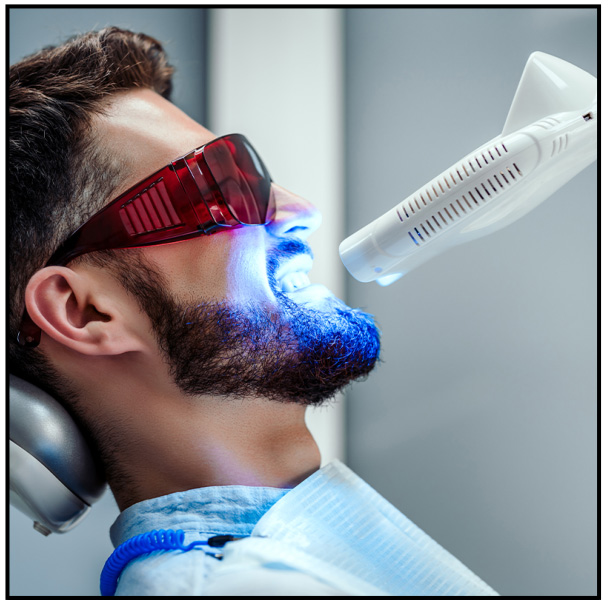
Causes of tooth discolouration
• Tooth discolouration can be caused by a variety of reasons, including:
• Consuming certain foods and beverages, such as coffee and tea
• Using tobacco
• Ageing
• Mouth injury
• Certain medications, such as antihistamines and chemotherapy Laser teeth whitening is intended to diminish discolouration and make one’s teeth appear whiter. This laser process of whitening your teeth is considered the most popular cosmetic dentistry procedure done by the best dentist in Bangalore.
How does laser teeth whitening work?
The teeth whitening procedure primarily takes 30 minutes to 60 minutes. The exact steps will vary depending on the requirements of an individual. A typical treatment entails the following:
• To help keep one’s mouth open, the dentist will insert a rubber or plastic prop.
• They will then make the individual wear safety eyewear to safeguard their eyes.
• They will also apply a gum barrier to maintain the patient’s gums healthy. The barrier could be made of a light-cured composite resin.
• The front teeth are bleached by the dentist.
• After a few moments, the dentist will point a laser at the teeth.
• This laser activates the whitening properties of the bleaching gel by heating it.
• The gum barrier will be removed and the decolourization gel will be rinsed out by the dentist.
The teeth become sensitive than usual for almost 24 hours after the laser teeth whitening procedure.
Advantages of laser teeth whitening
• Laser cosmetic dentistry is a quick procedure. An individual can see outcomes within a few hours of the appointment.
• Laser teeth whitening is highly accurate. If only a few teeth require whitening, an individual’s dentist will be able to concentrate solely on those teeth. It is completely painless.
• Laser teeth whitening can remove stains that other methods cannot.
• The whiter teeth can stay whiter for up to two years after laser whitening if anyone adheres closely to good daily dental hygiene habits.
This procedure typically utilises more potent chemicals than those found in at- home bleaching treatments. As a consequence, laser teeth whitening is more efficient and produces quick performance than home treatments such as whitening strips or toothpaste.
The whitening effects are only temporary and can last anywhere from a few months to three years. This is significantly longer than the majority of other treatments, including whitening strips and toothpaste.
Results after laser teeth whitening
The results and how long laser teeth whitening last will be determined by several factors, which include:
• The original colour of the teeth
• The frequency with which one receives treatments
• Lifestyle choices
• The decolourization gel and lasers used An individual probably needs three to four sessions in total to get the best results for laser teeth whitening.

Dentures and crowns are not suitable for laser teeth whitening. If you have either of these devices in your front teeth, the process may not be suitable for you.
To know more, it is important to consult with the dentists at the best dental clinic in Chandigarh, DENTAL LIFELINE to get the finest treatment for teeth whitening procedures.
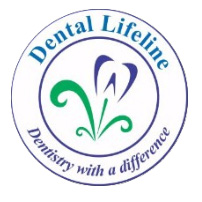
 20 Oct 2023
20 Oct 2023
MILK TEETH: WHY THEY ARE CRUCIAL FOR ORAL HEALTH
The most frequently asked question by most of the parents to a dentist is, “What is the importance of baby teeth?” and, “Why to save or take care of milk teeth when ultimately, they are going to fall and get replaced by permanent teeth?”
– The answer to this is, baby teeth are just as important as the permanent teeth and require proper oral care.
– Negligence towards the care of baby teeth can lead to serious problems affecting not only their dental health but also general health.
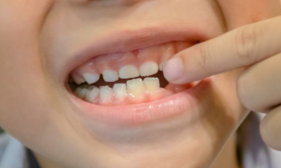
What are milk/baby teeth?
– Baby teeth or as dentist call them, “deciduous” or “primary” teeth, are actually present in the jaws when they are born, though they don’t usually appear until the baby is between 5 and 12 months old.
– Over the next three year, a full set of 20 primary teeth come, helping your child chew, supporting speech development, and giving them their cute smile.
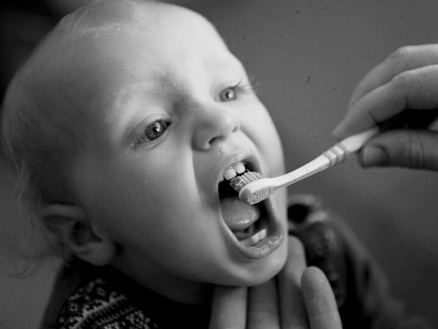
IMPORTANCE OF MILK TEETH:
1. Mastication[chewing]
Children need their teeth to chew food. So, if their teeth are permitted to decay, the child will not only suffer from discomfort, pain, and abscessed (pus formation) tooth, but also be unable to eat. This, in turn, could lead to malnourishment, ultimately affecting their growth.
2. Smile
Children need their teeth to smile. The stigma of blackened teeth and bad breath can lead to serious teasing at school and at play, which could affect the child’s psychosocial development.
3. Facial Development
Milk teeth are needed a for normal growth of the jaw bone and give an appropriate shape to the face. Primary teeth control the development of the jaw muscles and the jaw bones so that they are properly developed and can provide suitable space for the permanent set of teeth. Milk teeth give the face its shape and form.
4. Prevention of Abnormal Growth
Space saver milk teeth are essential to hold the spaces open so that the permanent teeth can come into the correct position when they are finally developed enough to erupt (erupt-to come through the gums). mispositioning of teeth can lead to crooked teeth, chewing difficulties, facial asymmetries, TMJ problems, and last but most important, decaying of teeth.
5. Speech
Milk teeth help in the development of speech. The tongue produces certain sounds with the presence of (primary) teeth. Children have difficulty in learning to pronounce the sounds like “th” and “f” in the absence of their front teeth.
6. Psychosocial Well-being
Milk teeth are important to maintain child’s psychosocial well-being as well. Healthy baby teeth are a tremendous boost to a child’s self-confidence and self-esteem.
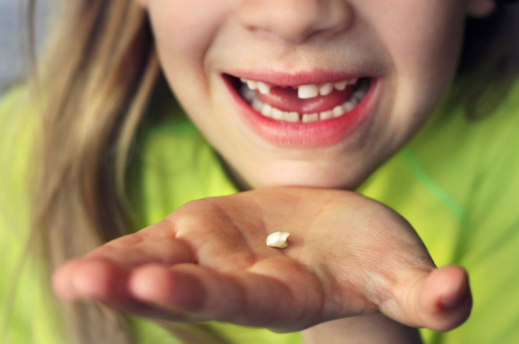
WHY MILK TEETH SHED OFF?
– A child’s baby teeth typically begin to loosen and fall out to make room for permanent teeth at about age 6.
– However, sometimes this can be delayed by as much as a year.
– The first baby teeth to fall out are typically the two bottom front teeth and the two top front teeth.
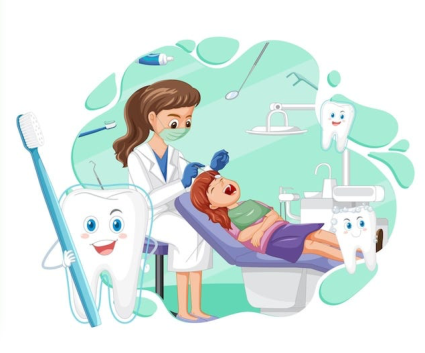
Oral hygiene is important for kids too…
It’s important to start practicing good oral hygiene as soon as your child’s first baby tooth erupts. For example;
• Remind your child to brush his or teeth at least twice a day. Supervise and offer assistance as needed.
• Help your child clean between his or her teeth daily.
• Eat a healthy diet and limit sugary food and beverages.
• Schedule regular dental visits for your child. Regular brushing at home is important, but it is not enough to keep teeth and gums healthy.
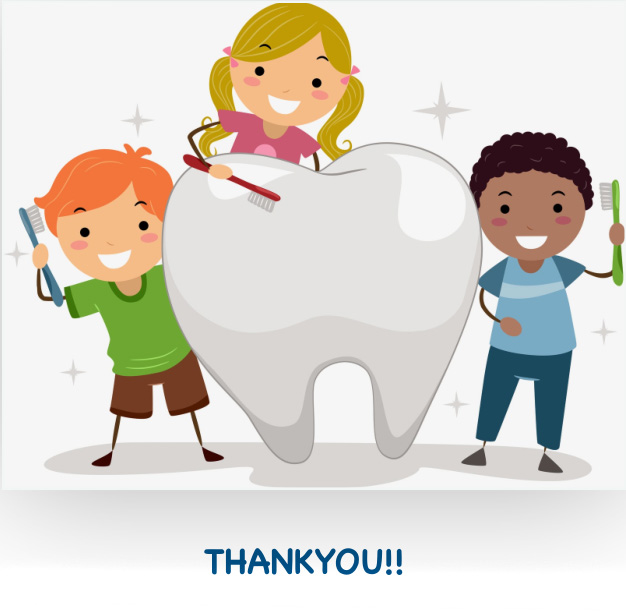
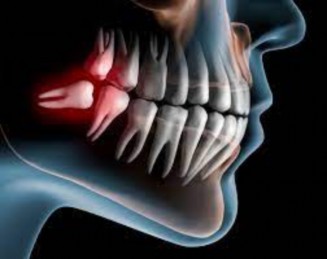 05 Oct 2023
05 Oct 2023
WISDOM TOOTH / IMPACTED TOOTH REMOVAL
Removal of wisdom teeth is a typical dental procedure. Wisdom teeth are the third molars located in the back of the mouth where it can be difficult to clean. In some cases, the wisdom teeth can crowd and then impact teeth nearby. That’s why many opt to remove them with the help from their dentist.
WHY DO YOU NEED TO REMOVE WISDOM TOOTH?
A wisdom tooth may get stuck or develop at an angle if there is not enough space to come through usually, we call this an impacted wisdom tooth.
If left untreated, this can affect your overall oral health.
If a wisdom tooth doesn’t come in properly or there isn’t enough room in your mouth, it can cause complications.
Impacted wisdom teeth can cause infection, pain, inflammation and other issues.
Dentists may recommend the removal of wisdom teeth as a precaution because they can cause long-term problems, like:
- Developing tooth decay or gum disease
- If wisdom teeth are impacted, you may develop and infection around the gum
- It may harm nearby teeth
- The impacted tooth may have a build-up of bacteria and plaque around it
- In rare cases, before the tooth erupts, there’s a possibility that the sack of tissue around the tooth can grow into a cyst.

WHEN DO YOU NEED WISDOM TOOTH REMOVAL ?
For many, their wisdom teeth grow normally and they won’t cause any problems. So some people choose to keep their wisdom teeth.
For others, it’s worth considering wisdom tooth extractions as their development can eventually lead to serious dental problems depending on your dental history. Most people have their wisdom teeth removed because they are crowding or damaging other teeth in the mouth. Impacted wisdom teeth may also cause pain, gum disease, and infection.
- Infection or cavities
- Lesions
- Damage to nearby teeth
- Jaw Damage
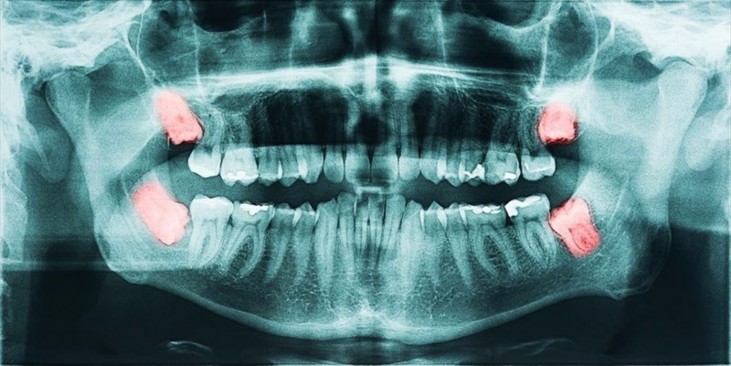
How long does it take to recover?
Recovery time can vary patient to patient, with most people recovering from wisdom tooth extraction within a few days to a few weeks. However, some people may experience more discomfort or take longer in their healing process after more difficult extractions. Recovery time can also vary depending on how many teeth and the type of extraction (simple or surgical). Always follow your dentists advice for aftercare, however listed below are things to promote healing after surgery.
Bleeding gums
Excessive bleeding may occur the first day after the removal. Try to refrain from excessive spitting so that you don’t dislodge the blood clots.

Pain management
A prescription from your oral surgeon or dentist. Holding a cold pack to the area may relieve pain and jaw stiffness.
Swelling and bruising Typically improves within two or three days. Your dentist or surgeon may instruct the use of an ice pack.
Activity
Rest on the surgery day and resume normal activities the next day. Avoid complex activities
Beverages
Dentists or oral surgeons suggest drinking a lot of water after the surgery and not with a straw because sucking may dislodge the blood clot. Don’t drink caffeinated, alcoholic, carbonated or hot beverages in the following 24 hours after surgery.
Food
Consume only soft foods in the 24 hours after surgery. Please refrain from eating chewy, hard, hot or spicy foods as they delay healing
Oral Hygiene
Typically, dentists will tell you to brush your teeth only after 24 hours from surgery. Don’t spit, brush your teeth, or rinse your mouth before. Use warm salt water every two hours for rinsing and after meals for a week.
Stitches
You may have stitches that dissolve within a few weeks or no stitches at all. Schedule an appointment to have them taken out if you have one.
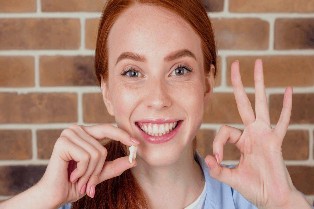
Thank You!
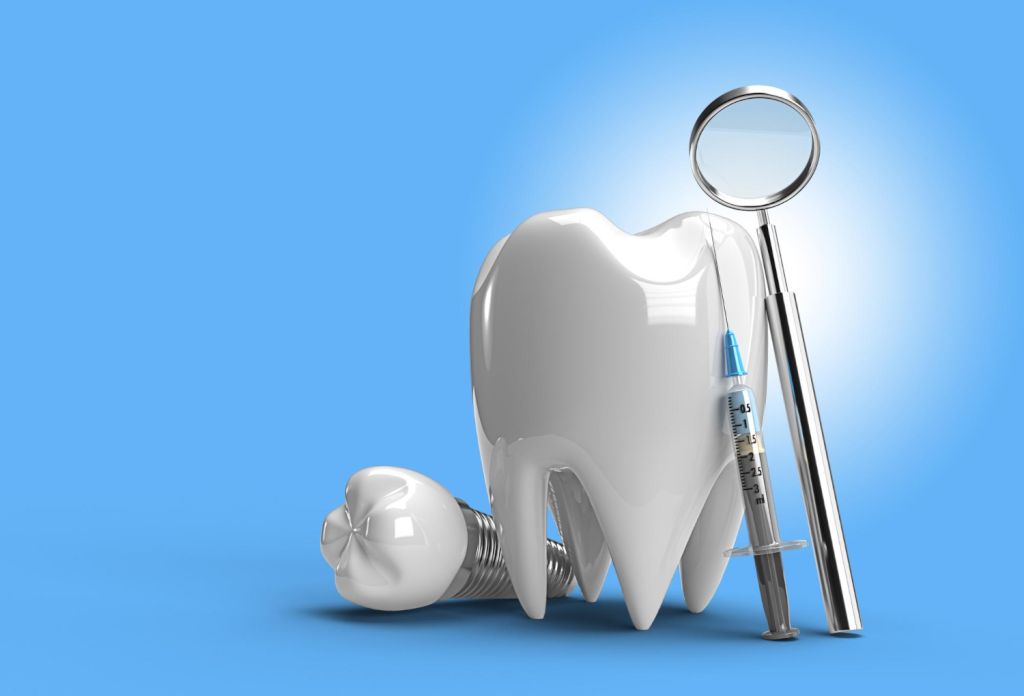 14 Sep 2023
14 Sep 2023
Dental Implants
Are medical devices surgically implanted into the jaw to restore a person’s ability to chew or their appearance. They provide support for artificial (fake) teeth, such as crowns, bridges, or dentures.
Background
When a tooth is lost due to injury or disease, a person can experience complications such as rapid bone loss, defective speech, or changes to chewing patterns that result in discomfort.
Replacing a lost tooth with a dental implant can significantly improve the patient’s quality of life and health.
The dental implant body is surgically inserted in the jawbone in place of the tooth’s.
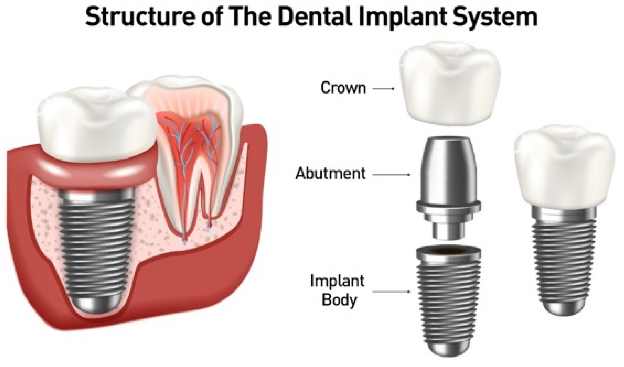
Benefits of Dental Implant Systems:
- Restores the ability to chew
- Restores cosmetic appearance
- Helps keep the jawbone from shrinking due to bone loss
- Preserves the health of the surrounding bone and gums
- Helps keep adjacent (nearby) teeth stable Improves quality of life
Implants have several advantages over dentures, which are removable artificial teeth:-
- are more natural and comfortable
- have a higher success rate
- improve chewing function
- lead to a lower risk of cavities developing in nearby teeth
- lead to better maintenance of bone at the site of the lost tooth
- cause decreased sensitivity in nearby teeth do not need to be taken out and cleaned every night.
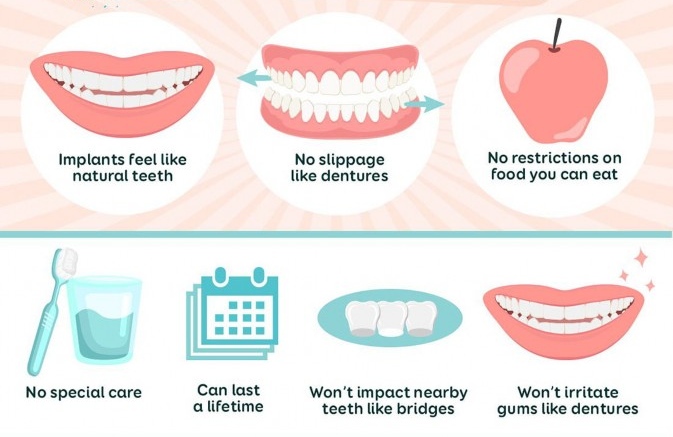
Recommendations for Patients
Before choosing dental implants, talk to your dental provider about the potential benefits and risks, and whether you are a candidate for the procedure.
Things to consider:
- Your overall health is an important factor in determining whether you are a good candidate for dental implants, how long it will take to heal, and how long the implant may stay in place.
- Ask your dental provider what brand and model of dental implant system is being used and keep this information for your
- Smoking may affect the healing process and decrease the long-term success of the implant.
After the dental implant procedure:
- Carefully follow the oral hygiene instructions given to you by your dental Regularly cleaning the implant and surrounding teeth is very important for long-term success of the implant.
- Schedule regular visits with your dental
If your implant feels loose or painful, tell your dental provider right away.
Safety
According to the American Academy of Implant Dentistry, around 3 million people in the United States have dental implants, and this number increases by about 500,000 every year. Dental implant surgery is safe when a qualified and experienced surgeon or dentist performs it. It is also the only dental restoration option that maintains the health of the person’s jawbone and stimulates its growth.
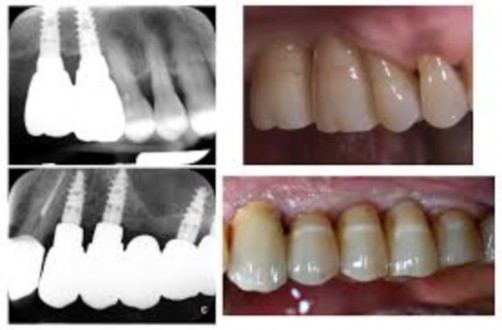

An implant-supported denture is an oral appliance that replaces several teeth at once.
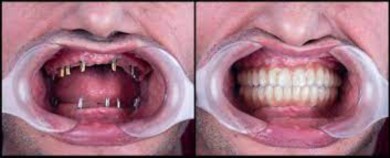
It’s similar to a traditional denture. But instead of resting on top of your gums, an implant-supported denture attaches directly to your jawbone using dental implants.
Removable implant-supported dentures
This type of denture “snaps on” to dental implants in your jawbone. It stays securely in place until you’re ready to remove it. With this option, you can take your dentures out every day for easy cleaning.
Fixed implant-supported dentures
A fixed denture — sometimes called a hybrid denture — attaches permanently to dental implants in your jawbone. You can’t remove it at home, but your dentist can remove it for maintenance when necessary.

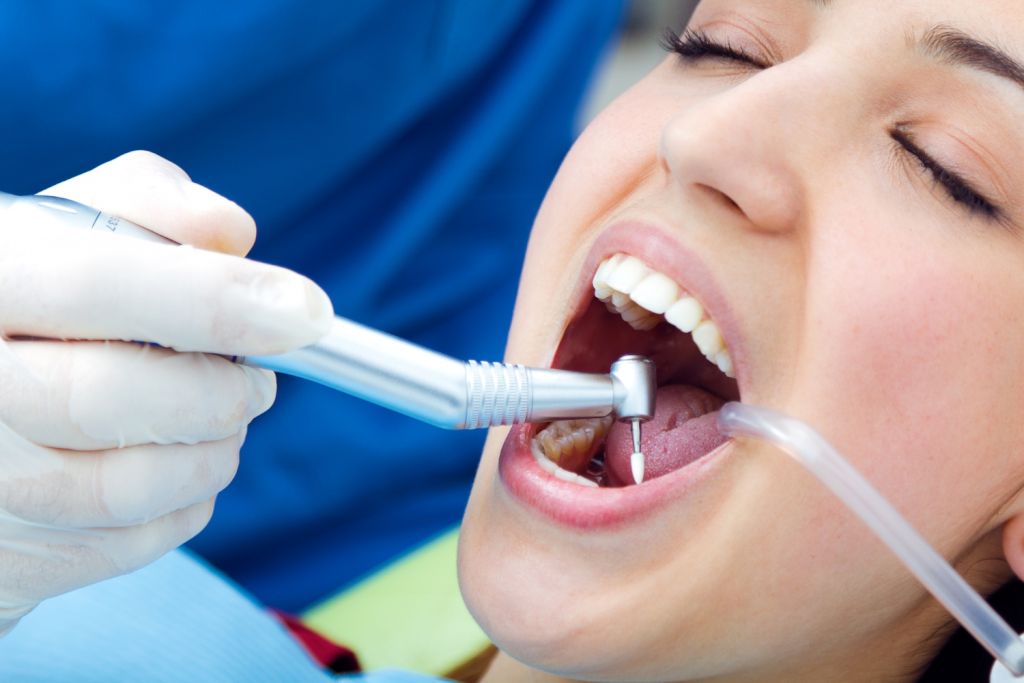 14 Sep 2023
14 Sep 2023
Dental Sealants
Dental sealants are thin, protective coatings that shield the chewing surfaces of your back teeth from harmful, cavity-causing bacteria.
What are dental sealants made of?
- Resins (plant or synthetic)
- Glass ionomers (glass powder combined with a water-soluble acid)
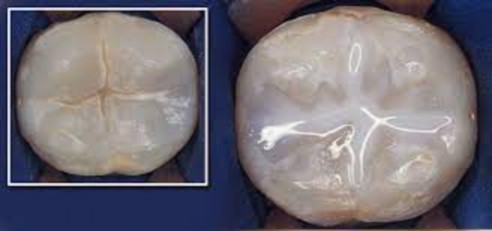
What is the purpose of sealants?
Dentists place sealants to protect your teeth from disease-causing bacteria. Your back teeth have deep grooves that help you grind up food when you chew. Food and bacteria can become trapped in these grooves, leading to tooth decay (cavities) over time. Sealants coat these areas so bacteria can’t reach them.
If a patient has a higher cavity risk in childhood and his adolescence teeth. Should we wait for the caries to develop in pits and then fill them?
The answer is No.
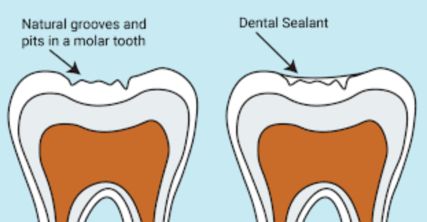

In such cases preventive measure in form of sealants is greatly required. Studies have shown that 80% caries reduction after 1 year after a single application of sealant.
- Sealant mechanically filled on the deep pits with acid resistant
- Since we are sealing the deep pits prior so now they will be no habitat for
- Thirdly, the tooth becomes more carious to
What are the benefits of dental sealants?
While diligent oral hygiene removes plaque, food and debris from your teeth’s smooth surfaces, brushing and flossing can’t always get into all the nooks and crannies. Sealants shield these vulnerable areas from cavities by “sealing out” bacteria, plaque and food particles.
Who needs dental sealants?
Children and teenagers are popular candidates for dental sealants. But adults without decay or dental fillings in their molars can also benefit from this treatment. In general, anyone who’s prone to tooth decay on their back teeth should consider sealants.
What is the recovery time?
There’s no downtime after dental sealant placement. You should be able to go back to work or school immediately.
How long do tooth sealants last?
Sealants last up to five years. For best results, you’ll need to have your sealants replaced on a regular basis.
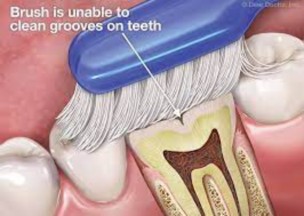
When can I eat or drink?
You can resume normal eating and drinking right after your appointment. However, it’s important to know that extremely hard, sticky or chewy foods can chip or erode your new sealants. It’s best to consume these foods in moderation.
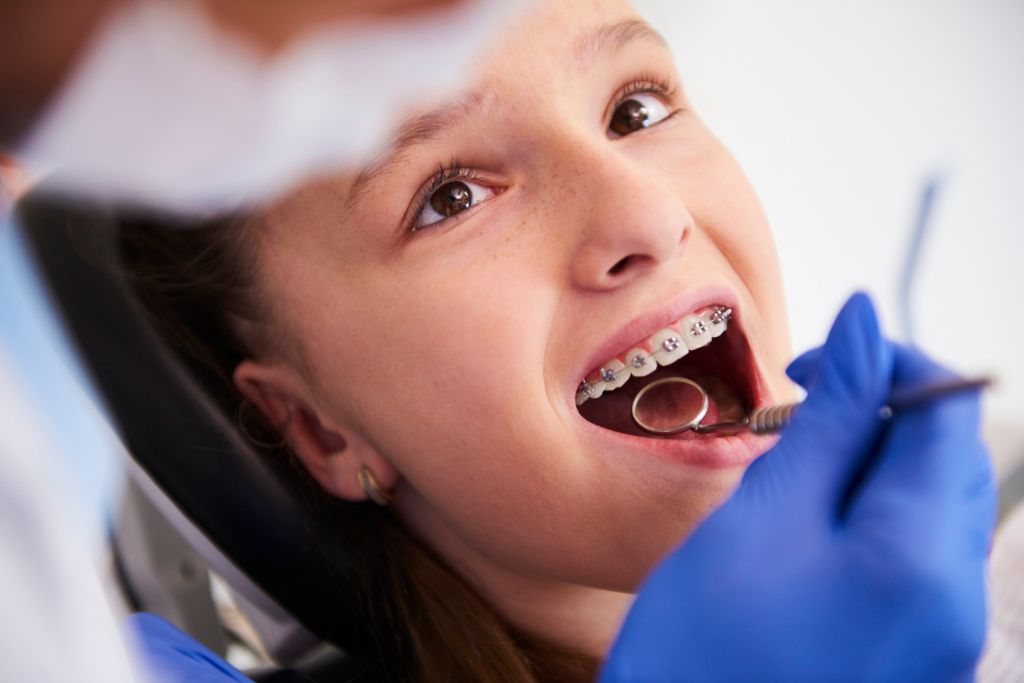 14 Sep 2023
14 Sep 2023
Know about DENTAL BRACES
- Braces can correct a wide range of dental issues, including crooked, gapped, rotated or crowded teeth.
- There are several types of braces, including traditional metal braces, ceramic braces and clear aligners like Invisalign®.
- Braces improve your smile’s health, function and appearance.
TYPES OF DENTAL BRACES
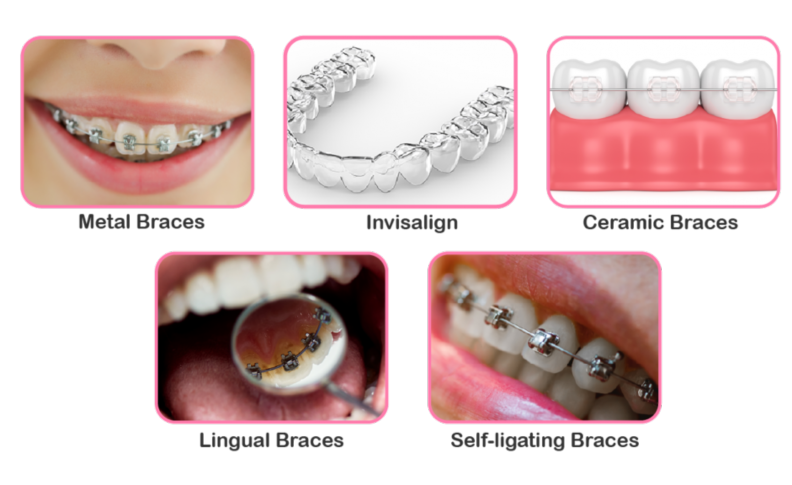
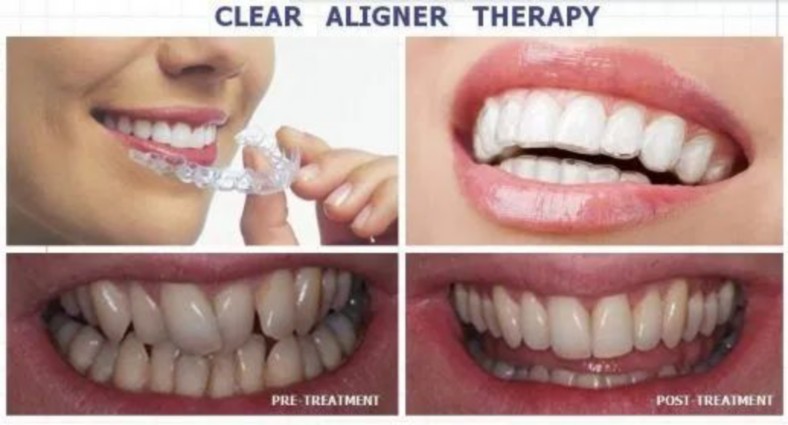
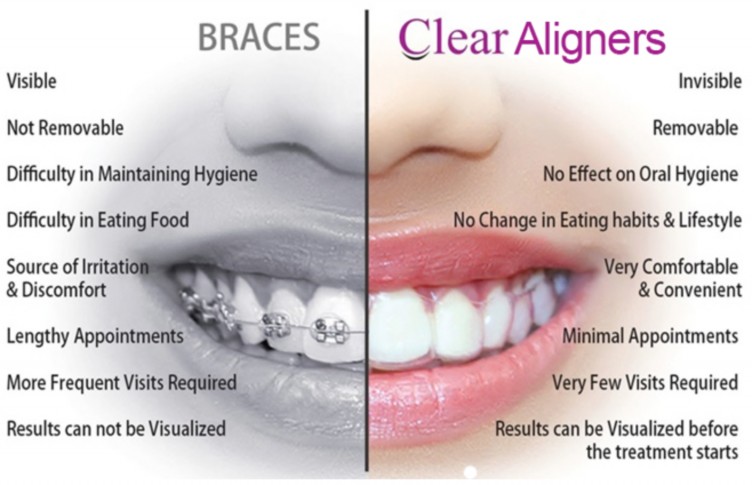
What age is best for braces?
You’re never too old for orthodontics. That said, the best time for braces is generally between the ages of 9 and 14. At this point, your jaws and facial bones are more malleable (flexible) because they’re still developing. Adult braces are just as effective, but it might take a little longer to achieve the desired results
How long do braces take to work?
The answer to this question is different for everyone. On average, braces treatment takes about two years to complete. But it depends on the severity of misalignment. Some people finish treatment in under 12 months. Others may need as long as three years.
What are the benefits of dental braces?
The most obvious advantage of braces is a straighter, more beautiful smile. But braces can also:
- Make your teeth easier to
- Help prevent cavities and gum
- Correct temporomandibular joint (TMJ) disorders.
- Restore proper functions like chewing and
In short, braces can improve the health, function and appearance of your smile
What are the normal side effects of braces?
There are some mild, expected side effects of braces, including:
- Temporary discomfort (which usually occurs the first day and any time your dentist tightens your braces).
- Irritation on your tongue, lips or inner
- Jaw pain.
- Difficulty eating (especially after a tightening).
You can manage most of these side effects with over-the-counter (OTC) pain relievers. You can also purchase dental wax for braces at your local pharmacy to help with irritation inside your mouth. Simply place some wax over any rough- feeling brackets or wire.

